8 Big Differences Between The Ender's Game Movie And Book
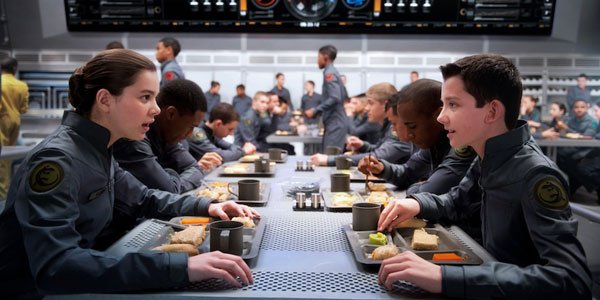
There has been a lot of controversy related to Ender’s Game and the author of the source material for the film, Orson Scott Card, over the last several months, thanks to Card’s unpopular views on gay marriage. The brouhaha surrounding the film has kept fan’s eyes and ears off of the director of Summit Entertainment’s film, Gavin Hood, who also adapted Card’s novel for the big screen. While our brains were busy formulating opinions about Card, Hood was working to take a book largely told from the perspective of a young boy named Ender with a brilliant military mind and turn it into a story that could be observed from the outside. Despite many fans’ love of seeing the cogs in Ender Wiggins’ mind churn and strive, Ender’s Game largely works as an action film.
Still, because the perspective in the novel needed to be changed to suit the needs of the film and because Card’s original novel is highly detailed and accurate in its intentions, Ender’s Game is a different but similar adventure on the big screen when compared to its novel counterpart. Hood is smart to use a lot of touchstones from the book so that the plot doesn’t stray too far from its source material, and overall, Ender’s Game feels like a newly detailed story with a familiar overarching plot.
Following are the eight biggest changes I noticed in my screening of Ender’s Game. Plenty of other details were changed, of course, and feel free to remark on any changes you feel may have been more noticeable. There are many spoilers in the Ender’s Game book to movie comparison. Do not delve in if you want the film to be a surprise.

The film begins with some historical context regarding why humanity is working to fight an alien civilization. There’s no time to let the details of the battles unfold throughout the movie, so audiences get an understanding of why humanity is preparing for a big battle right up front.
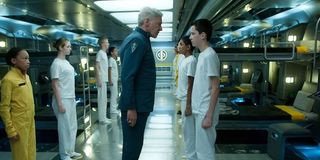
Ender Wiggin’s timeline is changed drastically in the film. In the novel, we first meet Ender at age six and he progresses into young adulthood and then adulthood by the end of the text. In the film, Ender is already an older child and Hood speeds up the urgency of the battle for humanity so that our protagonist can remain the same age throughout the film. It’s nice that they were able to keep the same actors in the roles. There is typically a disconnect when a character changes ages and actors partway through a film.
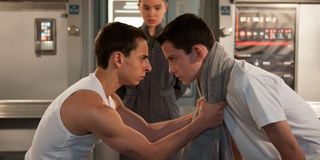
Ender’s capacity for violence is heavily toned down in the movie. In the film, it is never noted that he actually kills the bullies that prey upon him, including Stilson and Bonzo. His competence and desire to thoroughly win anything and overcome any obstacle placed in his path is understated until the final battle with the alien race. Additionally, while he has compassion in the novels, he is even more softened in the film, likely to make him more likeable.
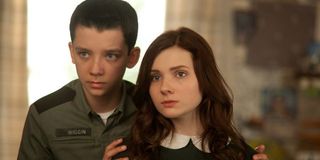
Ender’s siblings, Valentine and Peter, are almost cut out of the movie completely. We do get the barebones facts about their personalities and Valentine does help to pump Ender up when he is feeling down. Regardless, the fascinating secondary storyline following the siblings’ alter egos Demosthenes and Locke is cut entirely from the film, which is a bit of a bummer, since it offers a political counterpoint to Ender’s military experience.
CINEMABLEND NEWSLETTER
Your Daily Blend of Entertainment News
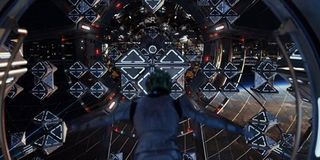
Ender’s time in Battle School is quite short. It would have been tedious to sit through several hours of mock battles, but what viewers don’t quite get is how thoroughly Ender is put through the wringer in Battle School. In the novel, just when he gets confident with one platoon, he is put into another, and each time he makes a friend, he is transferred into a new unit. Importantly, however, we do understand the fatigue and Ender’s ability to command respect with a little work.
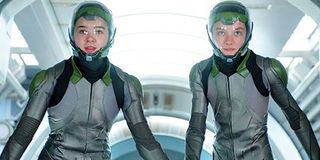
There are no practice sessions beyond the initial one. The practice sessions are able to help Ender to earn some loyal followers as well as work out details related to the battle games, and while they would have been fun to watch, there is a lot of filler in these segments that were thankfully streamlined for the big screen.
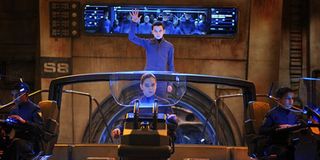
Bean becomes a friend early on. Bean’s character in the novel serves as a reminder of Bonzo’s folly. Ender learns early that Bonzo’s leadership tactics are faulty and when Bean presents a personality similar to Ender’s, it is up to Ender to figure out a way to earn Bean’s respect and still command adequately. In the film, Bean is simply a good-natured fighter. It works out fine, but the audience does lose the nice tie-in to Ender’s early experiences and his later ones.
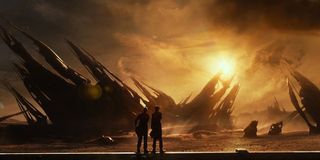
In the end, the race of "buggers" are able to communicate to Ender via one remaining queen on the planet where he fought the battle. One small life form is waiting to save the race, and Ender sets out to find the race a new home, making a small amends to the destruction he caused. This is less epic than the book ending, which features Valentine and Ender escaping into space and finding the small life form elsewhere, but it makes sense, considering Valentine and Peter don’t play a large role in the movie.

Jessica Rawden is Managing Editor at CinemaBlend. She’s been kicking out news stories since 2007 and joined the full-time staff in 2014. She oversees news content, hiring and training for the site, and her areas of expertise include theme parks, rom-coms, Hallmark (particularly Christmas movie season), reality TV, celebrity interviews and primetime. She loves a good animated movie. Jessica has a Masters in Library Science degree from Indiana University, and used to be found behind a reference desk most definitely not shushing people. She now uses those skills in researching and tracking down information in very different ways.
Most Popular





